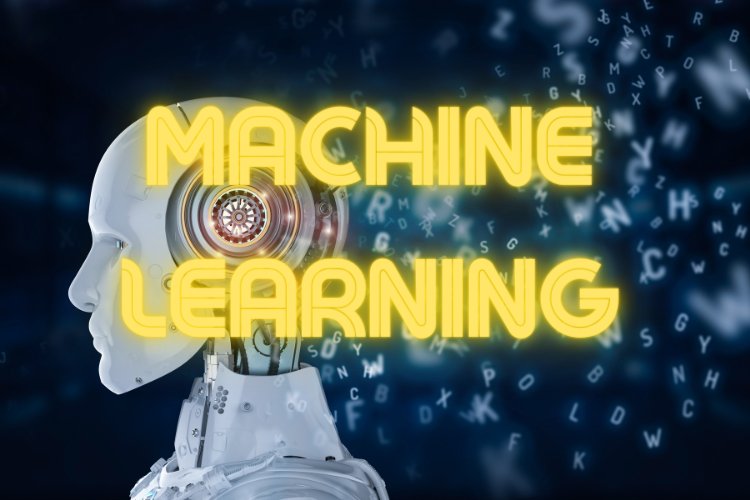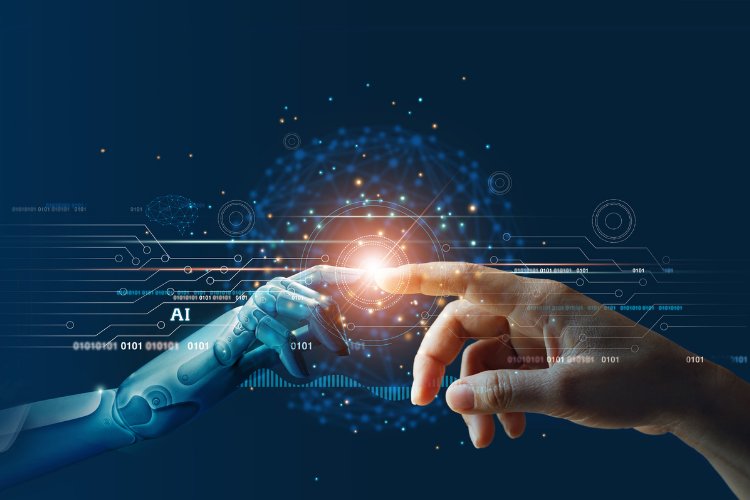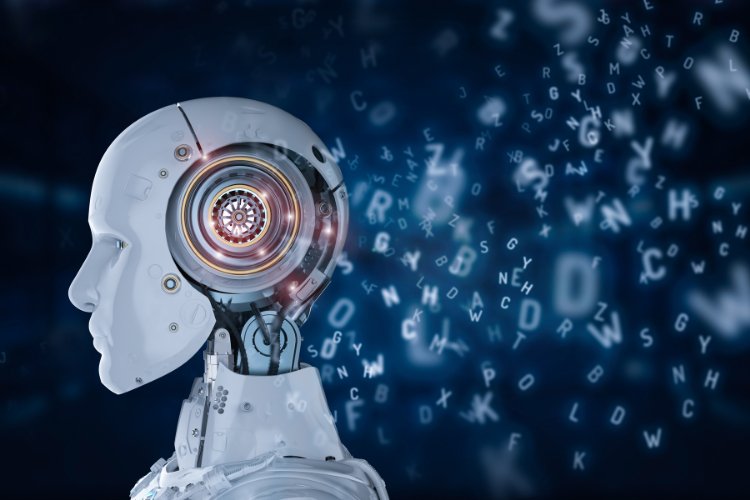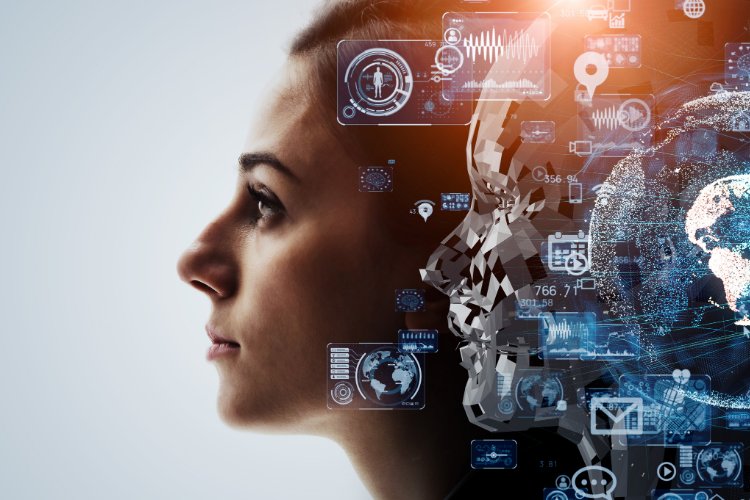What is machine learning?
Machine learning is a field of study within artificial intelligence (AI) that focuses on developing algorithms and models that can learn from data and make predictions or decisions based on that learning

What is machine learning?
Machine learning is a field of study within artificial intelligence (AI) that focuses on developing algorithms and models that can learn from data and make predictions or decisions based on that learning.
In simple terms, machine learning algorithms are designed to automatically identify patterns and relationships within a dataset, and use that knowledge to make predictions or take actions on new data.
There are three main types of machine learning algorithms: supervised learning, unsupervised learning, and reinforcement learning.

- Supervised learning algorithms learn from labeled data, where the correct answer is known, and use that knowledge to make predictions on new, unseen data.
- Unsupervised learning algorithms learn from unlabeled data, where the correct answer is not known, and try to identify patterns and relationships on their own.
- Reinforcement learning algorithms learn by interacting with an environment and receiving feedback in the form of rewards or penalties based on their actions.
Machine learning has numerous applications, including image and speech recognition, natural language processing, recommender systems, and fraud detection, among others.
Machine Learning vs. Deep Learning vs. Neural Networks
Machine learning, deep learning, and neural networks are all related concepts within the field of artificial intelligence, but they are not interchangeable terms.
Machine learning refers to a subset of artificial intelligence where algorithms are designed to learn from data and make predictions or decisions based on that learning. Machine learning algorithms can be supervised, unsupervised, or reinforcement-based.
Deep learning, on the other hand, is a subfield of machine learning that involves training neural networks with multiple layers of processing units to perform tasks such as image and speech recognition, natural language processing, and more. Deep learning algorithms use a hierarchical approach to learning, where lower layers of the network learn basic features of the data, and higher layers learn more abstract and complex representations.
Neural networks, also known as artificial neural networks (ANNs), are a type of computational model inspired by the structure and function of the human brain. They are composed of interconnected nodes or neurons that perform simple mathematical computations and communicate with each other to process and analyze data. Neural networks can be used for various tasks, including prediction, classification, and pattern recognition.
In summary, machine learning is a general term for a group of algorithms that can learn from data, while deep learning is a subset of machine learning that involves training complex neural networks with multiple layers of processing units. Neural networks are a specific type of computational model that can be used for various machine learning and deep learning tasks.
How machine learning works
Machine learning algorithms typically follow a general workflow that involves several key steps:
- Data Collection: The first step in any machine learning project is to collect and preprocess the data. This can include data cleaning, feature engineering, and splitting the data into training, validation, and test sets.
- Model Selection: Once the data is ready, the next step is to select an appropriate machine learning algorithm or model for the task at hand. This can depend on factors such as the type of data, the complexity of the problem, and the desired output.
- Model Training: After selecting a model, it needs to be trained using the training data. During this step, the model is presented with input data and adjusts its internal parameters to minimize the difference between its predicted output and the true output.
- Model Evaluation: Once the model has been trained, it needs to be evaluated on a separate validation set to assess its performance. This step can help identify any issues with the model and fine-tune its parameters.
- Model Deployment: After the model has been trained and evaluated, it can be deployed to make predictions on new, unseen data. This can involve integrating the model into an application or system, or deploying it to a cloud-based platform for remote access.
Throughout the machine learning process, it's important to monitor and adjust the model as necessary to ensure it is performing optimally. This can involve retraining the model with new data, fine-tuning its parameters, or selecting a different algorithm altogether.
Machine learning methods
There are several machine learning methods that can be used to solve different types of problems. Some of the most common machine learning methods include:
- Regression: Regression is a method used to predict a continuous numerical value, such as the price of a house based on its features. Linear regression is a popular regression algorithm that uses a linear equation to model the relationship between input features and output values.
- Classification: Classification is a method used to predict the category or class that a data point belongs to, such as whether an email is spam or not. Some popular classification algorithms include logistic regression, decision trees, random forests, and support vector machines.
- Clustering: Clustering is a method used to group similar data points together based on their characteristics, without prior knowledge of the groups. K-means clustering is a popular clustering algorithm that aims to minimize the distance between data points within a cluster.
- Dimensionality Reduction: Dimensionality reduction is a method used to reduce the number of features or variables in a dataset, while retaining the important information. Principal Component Analysis (PCA) is a popular dimensionality reduction algorithm that transforms the data into a lower-dimensional space while retaining as much variance as possible.
- Neural Networks: Neural networks are a set of algorithms inspired by the structure and function of the human brain, used for complex tasks such as image and speech recognition, natural language processing, and more. Some popular neural network architectures include feedforward networks, convolutional neural networks, and recurrent neural networks.
Common machine learning algorithms
There are many machine learning algorithms that can be used to solve various problems. Here are some of the most common ones:
- Linear Regression: A regression algorithm that is used to predict a continuous numerical value based on a set of input variables.
- Logistic Regression: A classification algorithm that is used to predict the probability of a binary outcome.
- Decision Trees: A classification algorithm that creates a tree-like model of decisions and their possible consequences.
- Random Forests: An ensemble algorithm that combines multiple decision trees to improve accuracy and prevent overfitting.
- Support Vector Machines (SVM): A classification algorithm that uses a hyperplane to separate data points into different categories.
- Naive Bayes: A classification algorithm that is based on Bayes' theorem and assumes independence between input variables.
- K-Nearest Neighbors (KNN): A classification algorithm that assigns a new data point to the class of its k nearest neighbors in the training data.
- Clustering Algorithms: These are unsupervised learning algorithms that group similar data points together based on their characteristics. Examples include k-means clustering and hierarchical clustering.
- Neural Networks: These are algorithms inspired by the structure and function of the human brain that can learn complex patterns in data. Examples include feedforward networks, convolutional neural networks, and recurrent neural networks.
- Principal Component Analysis (PCA): A dimensionality reduction algorithm that transforms a dataset into a lower-dimensional space while retaining as much variance as possible.

Real-world machine learning use cases
- Fraud Detection: Machine learning algorithms can be used to detect fraudulent transactions in real-time. By analyzing large amounts of data and identifying patterns and anomalies, these algorithms can flag suspicious transactions and prevent financial loss.
- Predictive Maintenance: Machine learning algorithms can be used to predict when equipment is likely to fail, allowing for proactive maintenance to be scheduled. This can reduce downtime and prevent costly equipment failure.
- Recommendation Systems: Machine learning algorithms can be used to analyze user behavior and make personalized recommendations for products, services, and content. This can improve customer satisfaction and increase sales.
- Image and Speech Recognition: Machine learning algorithms can be used to analyze images and speech, allowing for accurate recognition and classification of objects and words. This can be applied in areas such as facial recognition, object detection, and voice assistants.
- Natural Language Processing (NLP): Machine learning algorithms can be used to analyze and understand human language, allowing for applications such as sentiment analysis, chatbots, and language translation.
- Medical Diagnosis: Machine learning algorithms can be used to analyze medical images and patient data to aid in the diagnosis of diseases such as cancer. This can improve accuracy and speed up the diagnosis process.
- Energy Management: Machine learning algorithms can be used to optimize energy consumption and reduce waste in buildings and factories. By analyzing data on energy usage, these algorithms can identify areas for improvement and make recommendations for energy-efficient solutions.
Challenges of machine learning
While machine learning has the potential to revolutionize many industries, there are also several challenges that must be addressed in order to realize its full potential. Here are some of the major challenges of machine learning:
- Data Quality: Machine learning algorithms require large amounts of high-quality data to learn from. Poor quality data, such as data with missing values, outliers, or errors, can lead to inaccurate predictions and poor performance.
- Bias and Fairness: Machine learning algorithms can perpetuate biases and discrimination if the training data is biased or unrepresentative. It is important to ensure that the data used to train the algorithms is diverse and representative of the population.
- Interpretability: Many machine learning algorithms are complex and difficult to interpret, making it challenging to understand how they arrive at their predictions. This can be particularly problematic in applications such as healthcare, where interpretability is important for regulatory and ethical reasons.
- Scalability: As the amount of data increases, it can become challenging to scale machine learning algorithms to handle the increased computational requirements. This can be particularly challenging in applications such as real-time data analysis.
- Privacy and Security: Machine learning algorithms require access to large amounts of sensitive data, such as personal health information or financial data. It is important to ensure that this data is handled securely and that privacy concerns are addressed.
- Cost: Machine learning requires significant computing resources and specialized expertise, which can be expensive. This can be a barrier to entry for small businesses and organizations that lack the necessary resources.
As the technology continues to develop, it is important to address these challenges in order to ensure that machine learning is used in a responsible and ethical manner.

1. What is machine learning?
Machine learning is a subset of artificial intelligence that involves the use of algorithms to automatically learn patterns and make predictions or decisions based on data.
2. What are the different types of machine learning?
The main types of machine learning are supervised learning, unsupervised learning, and reinforcement learning.
3. What is the difference between supervised and unsupervised learning?
Supervised learning involves training a machine learning algorithm on a labeled dataset, where the desired output is already known. The algorithm learns to predict the output based on the input features. Unsupervised learning, on the other hand, involves training a machine learning algorithm on an unlabeled dataset, where the desired output is not known. The algorithm learns to identify patterns and structure in the data.
4. What is overfitting in machine learning?
Overfitting occurs when a machine learning algorithm is trained on a dataset to the point where it memorizes the training data instead of learning to generalize to new data. This can result in poor performance on new, unseen data.
5. What is deep learning?
Deep learning is a subfield of machine learning that involves training artificial neural networks with many layers. Deep learning algorithms can automatically learn to extract features from raw data, such as images or speech, without the need for manual feature engineering.
6. What is reinforcement learning?
Reinforcement learning is a type of machine learning that involves training an agent to take actions in an environment in order to maximize a reward signal. The agent learns to make decisions through trial and error, and the goal is to find a policy that maximizes the expected cumulative reward over time.
7. What are some common tools and libraries used in machine learning?
Some common tools and libraries used in machine learning include Python, TensorFlow, PyTorch, scikit-learn, Keras, and Jupyter Notebooks. These tools provide a range of functionality for tasks such as data preprocessing, model training, and evaluation.
8. What are neural networks?
Neural networks are a type of machine learning algorithm that are inspired by the structure and function of the human brain. They consist of layers of interconnected nodes that process and transform data.
9.What is overfitting in machine learning?
Overfitting occurs when a machine learning model is trained too well on the training data and performs poorly on new, unseen data.
10. What is underfitting in machine learning?
Underfitting occurs when a machine learning model is too simple and is not able to capture the underlying patterns in the data.
11.What is cross-validation?
Cross-validation is a technique used in machine learning to assess the performance of a model on new, unseen data. It involves dividing the data into training and validation sets, and then repeating this process multiple times with different partitions of the data.

12.What is regularization?
Regularization is a technique used in machine learning to prevent overfitting by adding a penalty term to the model's objective function.
13.What is a hyperparameter?
A hyperparameter is a parameter that is set before the model is trained and is not learned from the data. Examples of hyperparameters include the learning rate and the number of hidden layers in a neural network.
14.What is transfer learning?
Transfer learning is a technique used in machine learning where a pre-trained model is used as a starting point for a new model, allowing the new model to learn from the pre-existing knowledge.
15.What is feature engineering?
Feature engineering is the process of selecting and transforming the input features used in a machine learning model to improve its performance.
16.What is a confusion matrix?
A confusion matrix is a table used to evaluate the performance of a machine learning model by comparing the predicted and actual values.
17.What is gradient descent?
Gradient descent is an optimization algorithm used in machine learning to find the optimal values of the model parameters by iteratively adjusting them in the direction of the negative gradient of the objective function.
18.What are some common machine learning applications?
Common machine learning applications include image and speech recognition, natural language processing, fraud detection, recommendation systems, and predictive maintenance.












